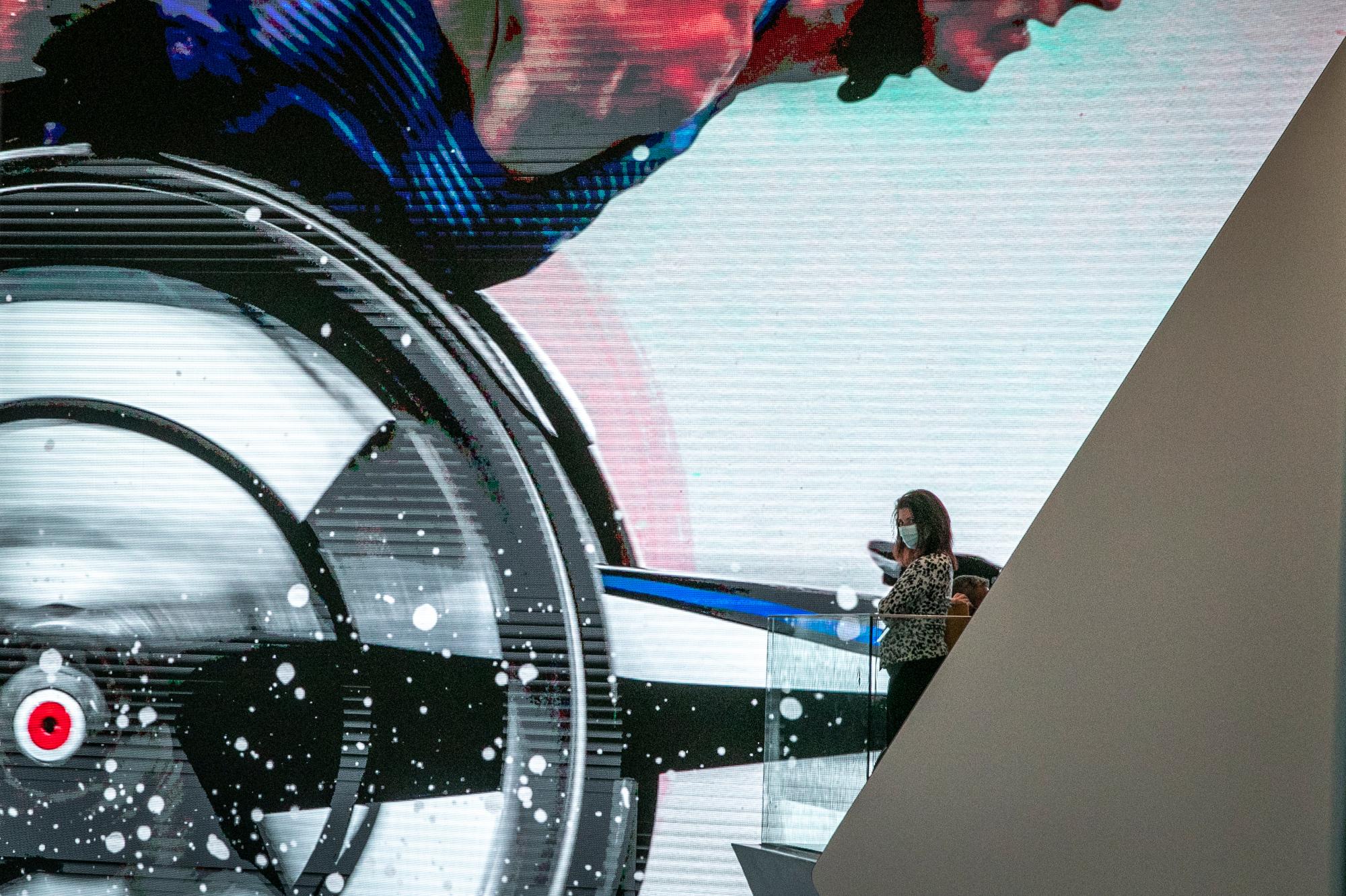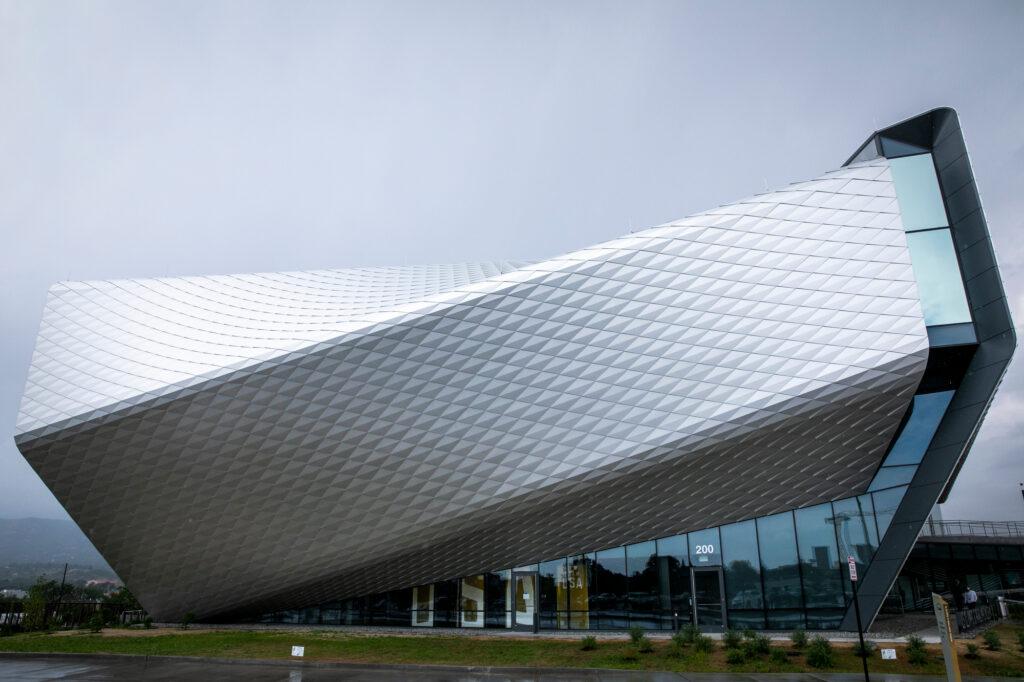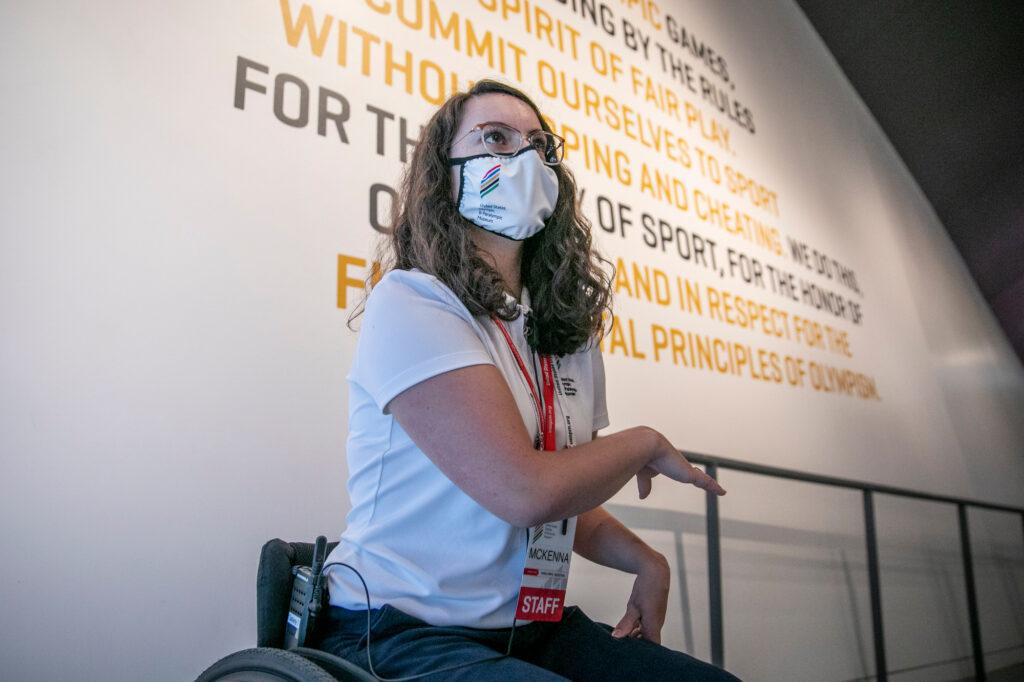
When John Register walked around a corner into one of the 13 exhibits in Colorado Springs’ new U.S. Olympic and Paralympic Museum, he couldn’t quite believe what was on display.
“I saw that they had my leg from Sydney, Australia, and I didn’t know it was here,” Register said.
It was with that prosthetic limb that he won the silver medal hanging around his neck — in the long jump during the 2000 Summer Paralympic Games. He of course knew he had donated the leg to the museum.
But that was years ago, and it was surprising and emotional to see it now so prominently displayed among other important memorabilia from throughout American Olympic history.
“I was misty-eyed, because when I see it, it’s like going back in time,” he said. “I was thinking about all the effort and work and the trials and tribulations that we go through.”
The $91-million, twisting steel-and-glass building housing the museum is now open to the public, years after it became the centerpiece of a multi-project effort to revitalize the downtown of Colorado’s second-largest city. Some of the landscaping on the grounds has yet to be completed and road workers are still busy with a transformation of nearby Vermijo Avenue into a pedestrian-friendly thoroughfare.
The experience inside the facility, however, is ready for visitors.
The star-studded grand opening operators originally had planned for late May was scuttled by the coronavirus pandemic. The museum will be letting in a fraction of the building’s capacity as a safeguard so visitors are strongly encouraged to reserve tickets online ahead of time.
They say tech designed for another purpose will now help keep the museum safer in the pandemic.

“It was built for another purpose, to give a good user experience,” said El Paso County Coroner and Chief Medical Examiner Leon Kelly. “(We) leverage that, basically, to create the world’s perfect anti-COVID museum imaginable.”
Each guest is given a visitor badge with an embedded RFID chip. The chips record preferences that users volunteer ahead of time, such as their favorite sport or if they have special needs due to a disability. The badges then track an individual’s progress through the museum and will accommodate those preferences when an exhibit is approached.
Museum CEO Christopher Liedel said the technology can allow more detailed audio interpretation for the blind, a lower-sensory experience for those with autism or simply more swimming-specific content for someone passionate about those events.
“We want it to be the most inclusive and accessible museum possible,” Liedel said.
Incidentally, the chips also allow museum staff to track the number of visitors in each gallery and who they are, which can help with contract tracing if a guest is later discovered to have contracted COVID-19.
“What this museum enables us to do as a public health department really makes everything else we’re doing look like the dark ages, it honestly does,” Kelly said.
The museum is designed for all guests to be able to appreciate the accomplishments of all Olympic and Paralympic athletes.

Museum guide and paralympic bronze medalist in shooting McKenna Geer led a group of reporters through the museum in a pre-opening preview. She noted how the museum was designed to offer a smooth experience for those in wheelchairs, such as herself.
Guests ride an elevator to the third floor, where they then work their way down through the exhibits sequentially, never needing to climb up stairs or ramps.
Interactive exhibits let visitors slalom ski or shoot in archery. You can race a life-size on-screen Jesse Owens down a short, 20-meter, sprinting track.
Displays show medals and torches from U.S. participation in all of the modern Olympic and Paralympic Games. The museum does not separate exhibits honoring Olympians from Paralympians, combining the two as one shared pursuit of athletic excellence.
Olympic figure skater Peggy Fleming Jenkins donated the dress and skates from her 1968 gold-medal performance. She said she was thrilled about the museum’s potential to inspire.
“People can come and experience all the great athletes that we’ve had in the past and see all the memorabilia from them and their record and photos,” she said. “I love that.”








